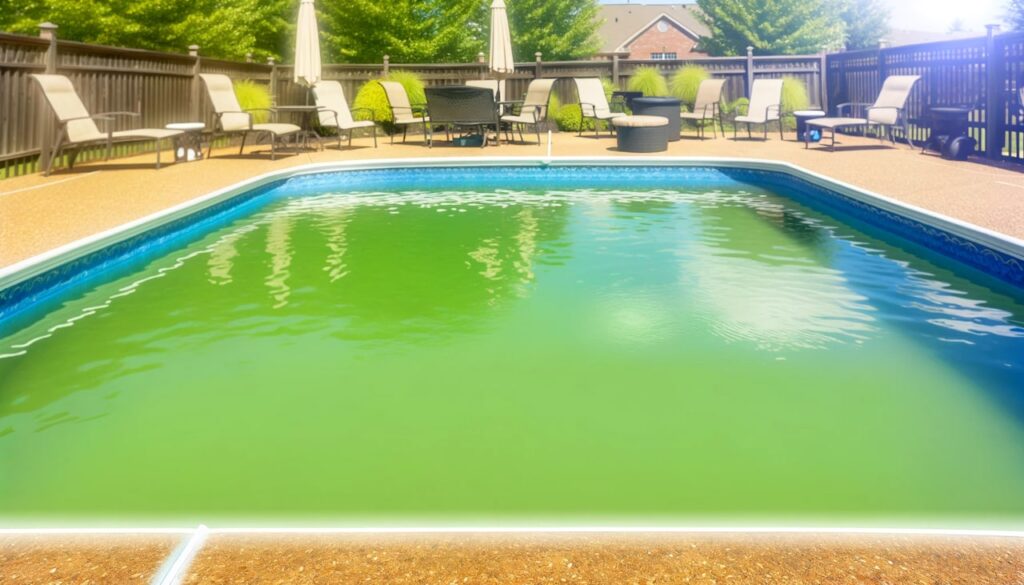Dealing with leaks in the plumbing system is one of the most annoying and expensive issues when it comes to pool maintenance. Copper pipes are commonly utilized for swimming pool plumbing because of their strength, however they can eventually experience leaks from damage, rust, or outside influences. This blog will guide you on how to stop leaks from pool incoming water copper pipes and on how to detect the source of the leak. If you like doing it yourself or using a professional, we have options for both preferences.
Must Read: Know How to Get Dirt Off the Bottom of a Pool with 7 Simple Steps
Understanding Leaks in Copper Pool Pipes
Copper pipes are frequently utilized for pool plumbing due to their ability to withstand heat and long-lasting durability. Nevertheless, despite these benefits, copper pipes can still experience leaks. Common reasons for leaks in copper pipes are:
Over time, copper pipe corrosion can happen due to being exposed to chlorine, pH imbalances, or mineral content in pool water.
Physical Harm: Pipes may experience cracking or breaking as a result of accidental impacts while being maintained, freezing temperatures, or movements in the ground.
As copper pipes age, they can become brittle and prone to leaking, especially if they have been in use for over 15 years.
Improper installation: Flawed fittings or insufficient soldering can lead to vulnerable points that may result in leakage.
Comprehending the reasons behind these leaks will help you pinpoint the best solution to handle and prevent future damage.
Step-by-Step Guide on How to Stop Leaks from Pool Incoming Water Copper Pipes
1. Identify the Source of the Leak
The initial step in fixing a leak is to find its precise origin. Begin by visually examining the copper pipes for any obvious indications such as water droplets, stains, or accumulation of corrosion. If you can’t see the leak right away, attempt these techniques:
- Pressure Testing: Utilize a pressure gauge to track decreases in water pressure, which can assist in identifying concealed leaks.
- Dye Testing: Testing with dye involves introducing a colored tracer into the water system to identify the source of a leak by following its path through the compromised area.
- Moisture Meters: These tools assist in identifying wet regions around the pipe that could point to a concealed leakage.
2. Turn Off the Water Supply
Prior to starting any repairs, turn off the pool’s water supply. This will stop the water flow in the pipes, enabling you to work on a surface that is not wet.
3. DIY Repair Methods
DIY techniques can frequently be used to save time and money on minor leaks. Below are a few of the best methods for fixing leaks in copper piping:
a) Epoxy Putty for Small Leaks
Epoxy putty is a convenient option for minor cracks or tiny leaks. Proceed with these instructions:
- Wipe the area surrounding the leak with a cloth to keep it clean.
- Use the epoxy putty to cover the leak directly, making sure the crack is completely coated.
- Follow the manufacturer’s instructions and let the putty dry, which usually takes a couple of hours.
b) Pipe Sealants for Threaded Connections
Leaks are often found in threaded connections. Fix these leaks by using either a pipe sealant or Teflon tape.
- Cover the threads with Teflon tape or use a liquid sealant with 4-6 layers.
- Secure the attachment for a leak-proof seal.
c) Hose Clamps for Quick Fixes
Hose clamps provide a fast fix for leaks on a temporary basis.
- Dry around the leak.
- Position the hose clamp on top of the affected area and use a screwdriver to secure it until the leak is no longer present.
- Although this approach works in the short term, it should be succeeded by a lasting solution.
4. Professional Repair Methods
For serious leaks or significant damage, it is advisable to seek assistance from a professional. Plumbers have the capability to utilize more sophisticated methods such as:
a) Joining metal pieces together using a heated metal alloy.
Soldering includes heating the tube and using solder to close any gaps or damages. This is a solution that lasts a long time, but it necessitates specific tools and expertise.
b) Changing out the pipes
If the pipe is severely corroded or cracked, it may be essential to replace the affected section. An expert will remove the damaged section and install a new copper pipe, making sure to solder the joints correctly to prevent any leaks.
Read More: Why Are Pools So Expensive in Austin?
Preventing Future Leaks in Copper Pipes
Although fixing leaks is important, implementing preventative measures can prevent future issues. Below are some suggestions to prolong the lifespan of your pool’s copper plumbing network:
1. Regular Maintenance Checks
Perform monthly checks on the pool’s plumbing system. Inspect for corrosion, cracks, or loose joints in their early stages. Quickly tackle any problems to stop them from escalating into significant leaks.
2. Monitor Water Chemistry
It is important to keep water chemistry balanced to avoid corrosion in copper pipes. It is important to maintain pH levels within the range of 7.2 to 7.8 and to prevent excessive chlorine usage, as it can speed up corrosion.
3. Use Protective Coatings
Covering copper pipes with a protective coating, like epoxy, can help protect them from corrosion and lower the chances of leaks.
4. Insulate Pipes
If your pool is in a cold climate, think about insulating the copper pipes to avoid freezing, as this can cause cracks and leaks.
Conclusion
Leaks in your pool’s incoming water copper pipes can be a nuisance, leading to water waste, higher bills, and potential damage. By understanding the causes, using DIY methods for minor issues, and knowing when to call in a professional pool builder for major repairs, you can keep your pool’s plumbing system running smoothly. Regular maintenance and preventive measures will further ensure your copper pipes last longer without developing leaks.



